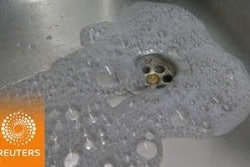Several types of phthalates have been banned in the U.S. because to ongoing worries about their potential for harm.
The chemicals are used to make plastics and vinyl softer and more flexible, and they find their way into a wide variety of consumer products — from coatings in pharmaceutical pills to lubricants, packaging, adhesives and paint. But because of how phthalates are emitted and the potential for long-term health consequences — research has linked phthalates to reproductive issues and an increased risk for allergies and asthma — the spotlight with phthalates has often been on children’s products and toys.
Americans are often exposed to phthalates through everyday products, and biomonitoring data by the Centers for Disease Control and Prevention has shown that children’s intake is often above what is considered safe.
As the U.S. continues to weigh further regulations, manufacturers have turned to other un-banned phthalates, and researchers are now working to understand the potentials risks of these new plastics — which is why a pair of scientists recently set their sights on phthalates emissions from vinyl mattress covers.
In a new report released in the American Chemical Society’s Environmental Science & Technology, Ying Xu and Yirui Liang have revealed results from their study showing that increased heat boosts phthalate emissions from vinyl mattress covers.
The pair said the plastic commonly used in children’s cribs are of particular concern because infants breathe in far more air than adults, given their lower body weight. And because of how much they sleep, phthalates could be affecting the air they breathe 12 to 14 hours a day.
According to the research, when residential temperatures rise from 77 to 97 degrees, it can raise the gas-phase concentration of phthalates by more than a factor of 10. They note that the total airborne concentration may not increase that much for less volatile compounds.
The takeaway message is that from what is known now, it’s safest to keep temps well below 97 degrees in a baby’s room. The pair also recommend that more investigation be done into the toxicity of newer phthalates on the market.
See more about the report here.






















